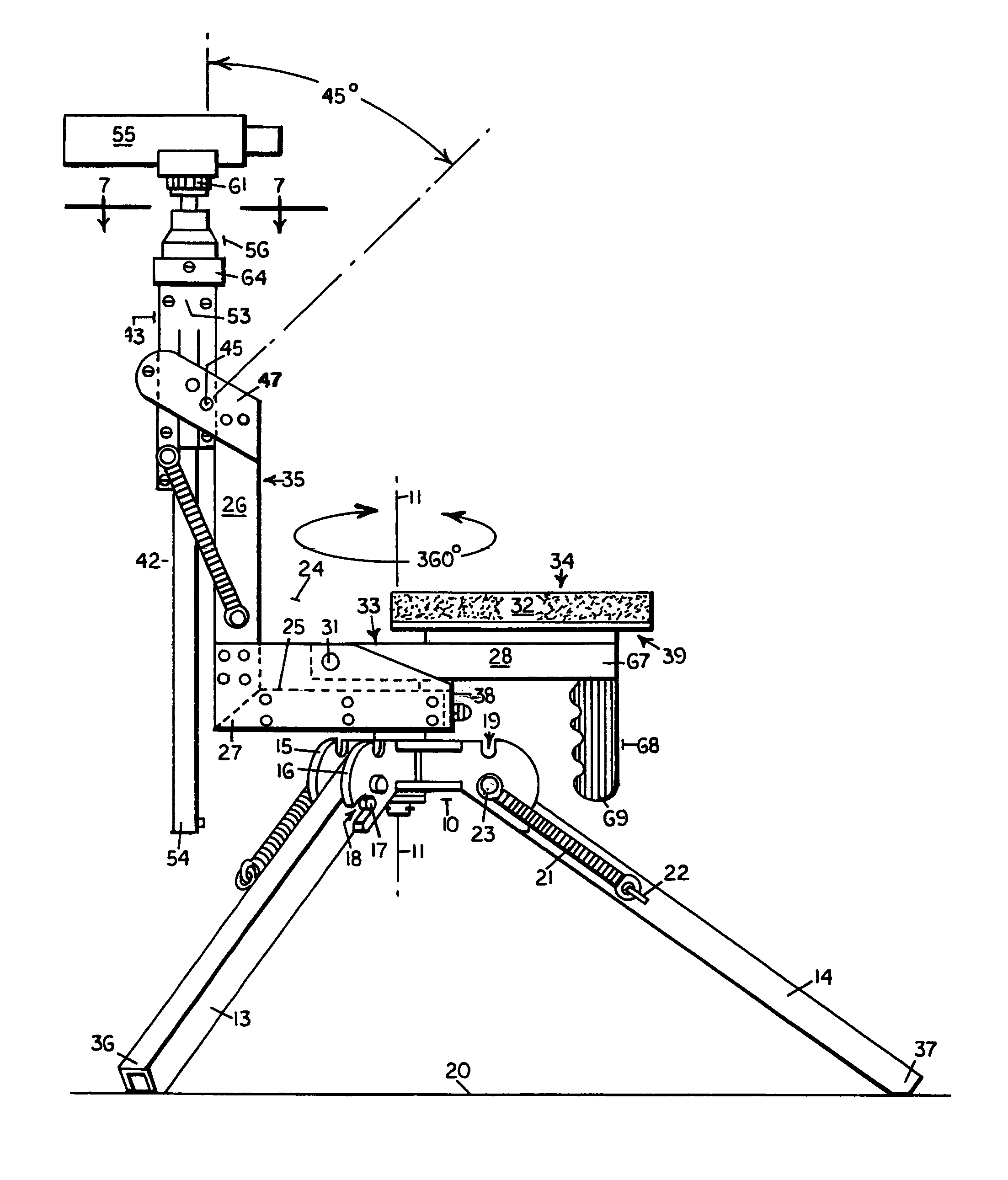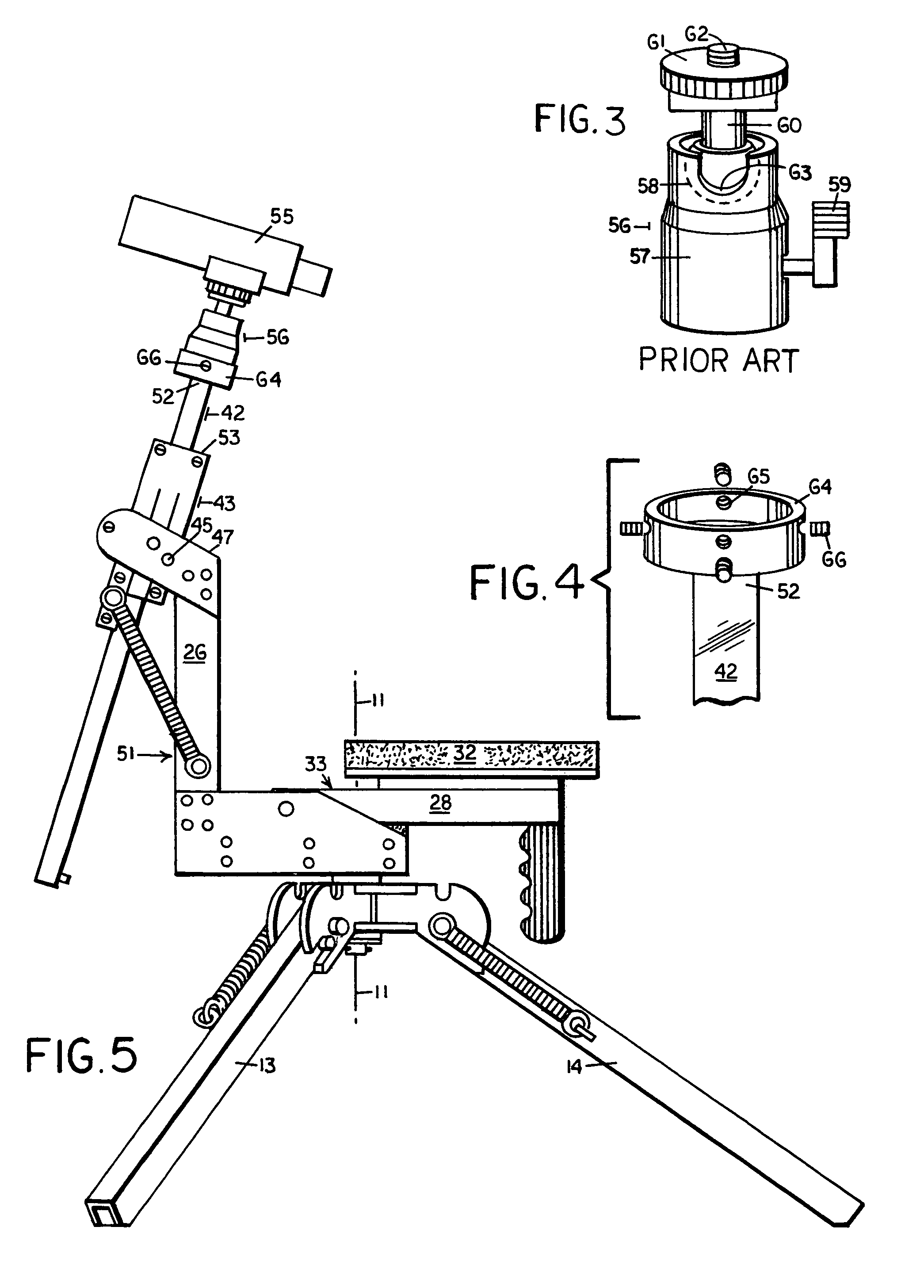Compactly foldable skywatcher's tripod
a tripod and folding technology, applied in the field of skywatching equipment, can solve the problems of putting a strain on one's back, limiting the dynamic use of acquiring and tracking a moving target, and conventional tripods not serving this mark
- Summary
- Abstract
- Description
- Claims
- Application Information
AI Technical Summary
Benefits of technology
Problems solved by technology
Method used
Image
Examples
Embodiment Construction
[0064]Referring to the accompanying drawings, a skywatcher's tripod according to the present improvement includes prior art comprising a base, indicated generally as 10, FIGS. 1 and 10, defining a swivel axis 11, three leg members 12, 13, 14, FIG. 10, pivotally secured to the base 10 for rotation about leg pivot axes 12′, 13′, 14′, respectively, FIGS. 8 and 10, which are orthogonal to the swivel axis 11, the base 10 including three pairs of parallel spaced apart base lugs as at 15, 16, in FIGS. 1 and 2, between which the leg members, such as leg member 13 in FIG. 1, are secured. Each leg member includes a pin as at 17, FIG. 1, that is received in notches as at 18 (associated with leg member 13) and 19 (associated with leg member 14), which are formed in each pair of base lugs, whereby the leg members are securable in an unfolded position as shown in FIG. 1 wherein the leg members are positioned inclined downwardly from the base 10 in order to support the base 10 at an elevation spac...
PUM
 Login to View More
Login to View More Abstract
Description
Claims
Application Information
 Login to View More
Login to View More - R&D
- Intellectual Property
- Life Sciences
- Materials
- Tech Scout
- Unparalleled Data Quality
- Higher Quality Content
- 60% Fewer Hallucinations
Browse by: Latest US Patents, China's latest patents, Technical Efficacy Thesaurus, Application Domain, Technology Topic, Popular Technical Reports.
© 2025 PatSnap. All rights reserved.Legal|Privacy policy|Modern Slavery Act Transparency Statement|Sitemap|About US| Contact US: help@patsnap.com



